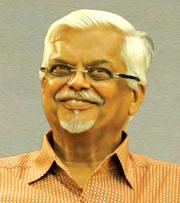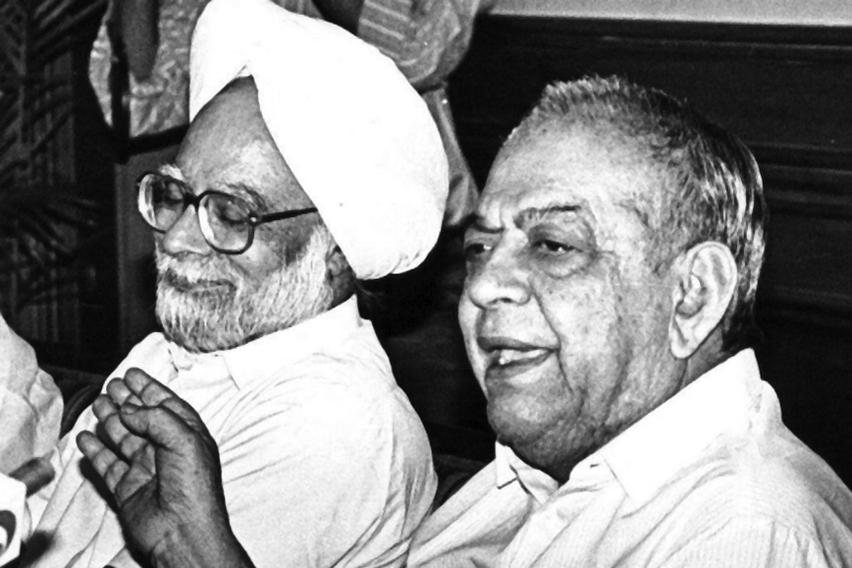
SANJAYA BARU
A quarter-century ago, in a different era, a very different kind of politician from very different political parties sat together and presented a report to the Union ministry of law, justice and company affairs on the need for “State Funding of Elections” (1998). The committee was chaired by the CPI leader, Indrajit Gupta, and included Manmohan Singh from the Congress, Somnath Chatterjee of the CPI(M), Vijay Kumar Malhotra of the BJP and Ramgopal Yadav of the Samajwadi Party. They unanimously agreed that “money power and muscle power”, both going hand-in-hand, had vitiated Indian democracy and that something had to be done.
Reading that report today, in the light of the ongoing discussion on the cornering of electoral bonds by the ruling party at the Centre and on the role of money power in politics, one cannot escape the feeling that a mere 25 years ago we lived in a different India. State funding does not mean giving cash to recognized national political parties, the committee concluded, but would imply providing support in kind that offered a reasonable level playing field to all national parties.
What has brought the issue of election funding back on the national agenda today is the fact that over these past 25 years since the submission of the Gupta Committee report, one single political party has cornered over 90 percent of ‘electoral bonds’ sold. The denial of funds to others has raised questions about the direction of Indian democracy and the relationship between wealth and power. Electoral funding is only one dimension of this link between wealth and power.
As I have tried to explain in my book, India’s Power Elite: Caste, Class and a Cultural Revolution (Penguin, 2021), in India’s ‘psephocracy’, as sociologist Ashis Nandy characterized an electoral democracy, wealth remains, above all, the most important determinant of power. The cost of getting people out on election day to cast their vote is rising even as their trust in the system may be waning. Several recent studies have focused on the role of money power in politics and the nexus between crime, business and politics.
The rising cost of election campaigns, the inability of the state to enforce rules pertaining to election funding and, more recently, the brazen manner in which political parties in power are able to corner the bulk of the funds provided by corporates and other donors has made politics a game of the rich in which the wealthy become wealthier and are able to become politically more powerful.
It is not, therefore, surprising that a disproportionate number of members of state legislatures and Parliament are wealthy. There had been some dilution of this aspect in the first decade after Independence with more members of the middle class, including rich peasants, entering politics. However, as election expenses have grown and with the rising importance of political office as a source of both power and wealth, there has been a rise in the number of the wealthy among the elected representatives of the people.
Consider the social composition of the 17th Lok Sabha, elected in 2019. It has more wealthy members than any other Lok Sabha in the past half-century. Data collated by the Association for Democratic Rights (ADR) shows that as many as 475 MPs (constituting 88 percent of the 539 MPs for whom data was available) have assets upwards of `10 million (one crore), slightly up from 443 (82 percent) in the 16th Lok Sabha. Out of 542 winners analyzed during the Lok Sabha 2014 elections, 443 (82 percent) were crorepatis. In the 15th Lok Sabha (2009–14) the comparable number was appreciably less at 315 (58 percent).
The ADR study shows that not only had MPs become richer during the five years they were members of the Lok Sabha but that in successive elections since 2009 the proportion of crorepati candidates among the victors has also risen. In other words, the wealthy had a better chance of securing admission to political office, and that office had become an important source of acquiring wealth. In a country with a nominal per capita income that is less than `200,000 per annum, and at least a fifth of the population lives in abject poverty, it is surprising that an overwhelming number of elected representatives, both in the Lok Sabha and in Assemblies, are millionaires if not billionaires.
The ADR data showed that with the exception of MPs from the communist parties, all other MPs of all other parties were millionaires, with the BJP having the largest number of them. As many as a third of MPs in the 17th Lok Sabha had assets worth more than `50 million, while average assets per winning MP was `21 million. The wealthiest MPs, however, came from smaller political parties like YSR Congress, Nationalist Congress Party, DMK, Bharat Rashtra Samithi (BRS) and Akali Dal.
These are, of course, declared assets, and that too, in the name of the specified individual and not of all family members taken together. Many wealthy Indians hold considerable wealth in the name of their spouse. The ADR data also shows, interestingly, that MPs from regional parties like the Akali Dal, BRS and the Nationalist Congress Party saw the highest increase in wealth of sitting MPs between the elections of 2014 and 2019.
There is a growing feeling that Indian democracy has become a plutocracy — a regime of the rich. If national big business invests in a national political party at the Centre, regional businesses invest in regional political parties. In my study of regional business and regional politics (Economic policy and the development of capitalism in India: the role of regional capitalists and political parties, published in Transforming India: Social and Political Dynamics of Democracy, Francine Frankel, et al (edited), Oxford University Press, New Delhi, 2000). I drew attention to the role of regionally based business groups from such castes as Kammas, Reddys, Chettiars, Patels and so on in funding regional political parties. National or regional, the link between wealth and power has become so intimate that few today even mention in passing the idea of state funding of elections.
Those interested in the report of the Indrajit Gupta Committee on State Funding of Elections can find it on the ADR website: www.adrindia.org
Sanjaya Baru is a writer and Distinguished Fellow at the United Service Institution of India
Comments
Currently there are no Comments. Be first to write a comment!




